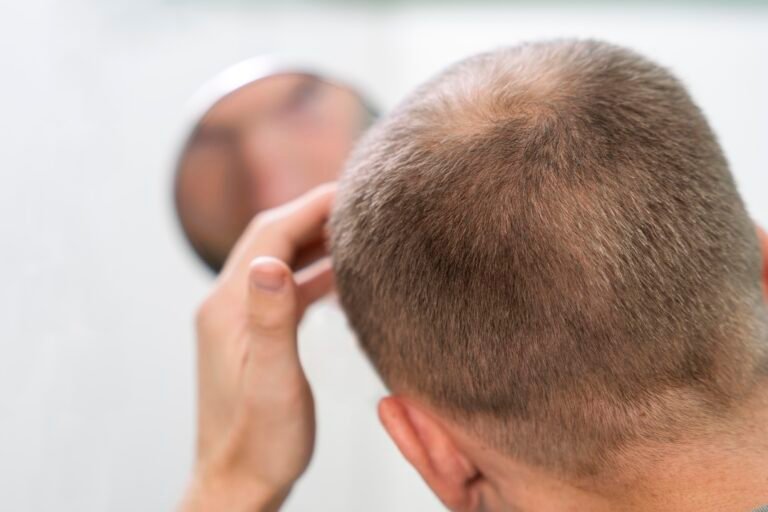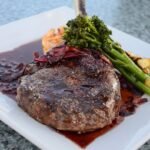Hair is a component of the integumentary system and extends downward into the dermal layer, where it sits in the hair follicle. Humans have approximately five million hair follicles, which offer protection from cold and UV radiation, produce sebum, and can have a significant psychological impact when growth or structure is unbalanced.
The Anatomy of Hair: Shaft, Follicle, and Bulb
Each hair has two distinct parts (i) a hair shaft which is a thin, flexible, cylindrical, visible part of hair above the epidermis (non- living part) and (ii) a hair follicle located below the epidermis (living part) which enlarges at the base to form hair bulb. Hair bulb is the germination center or matrix of the follicle where cells undergo active mitosis, move upward, elongate and incorporate into the hairs as they grow. The hair bulb surrounds the hair papilla, a structure made of connective tissue, nerve fibers and blood capillaries for the supply of nutrients. Hair shaft consists of three layers: cuticle, cortex and medulla. The medulla forms the central core of the hair and determines stiffness and thickness of hair, it is absent in fine hairs. Medulla is surrounded by the thickest layer of compressed keratinized cells called cortex. This layer constitutes around 80-90% of the hair’s diameter and also contains the pigment melanin, imparting natural colour to hairs. Cuticle, the most outer layer accounting for about 10% of the hair is dense, tough and protects the inner layers from the external physical & chemical abuses. It contributes shine and elasticity to the hair. Keratin protein is one of the main constituents of hair comprising upto 95% of the hair structure. It is produced by keratinocytes found in hair follicle.
The Hair Growth Cycle: Anagen, Catagen, and Telogen
Growth of each hair follows a cycle consisting of three phases: anagen, the growing phase; catagen, the regression phase and telogen, the resting phase.
While androgen hormones are responsible for stimulating body hair production during and after puberty, these hormones have an opposite effect of suppressing hair growth on scalp. In the hair follicle, testosterone (Ts) is converted to dihydrotestosterone (DHT) by the enzyme 5α-reductase. Increased level of DHT leads to balding, also known as androgenic alopecia. It is believed that circulating DHT enters the follicle via the capillaries in dermal papilla, bind to the androgen receptor (AR) within the cells, and then activate the gene responsible for inhibiting the growth of keratinocytes in outer layer of hair follicle. Apart from synthesizing keratin, keratinocytes also possess vitamin D receptors. Vitamin D promotes hair regeneration and can compensate for hair growth inhibition due to DHT by binding to vitamin D receptors in keratinocytes. Thus individuals with androgenic alopecia are usually deficient in vitamin D.
Natural and Medical Interventions for Hair Loss
Medicines to control DHT levels function either by blocking DHT from binding to androgen receptors or inhibiting the production of DHT by blocking 5α-reductase. Several natural compounds in food such as sitosterol and fatty acids can inhibit 5α-reductase.
Many different compounds such as phenolic compounds and vitamins support to maintain health of hair follicles. Vitamin C helps increasing blood flow in the scalp by improving formation of blood vessels. As mentioned earlier, lack of vitamin D receptor is associated with reduced and follicle growth. Deficiency of vitamin B7 (biotin) induces alopecia and its supplementation has been shown to be is effective in reducing hair loss in clinical trials. In addition to this, amino acids such as cystine and lysine increase hair density and as well as anagen rate.
Hair follicles store ferritin, which is available for utilization in case of iron deficiency. When there is deficiency of iron, hair growth is halted and ferritin is freed to maintain normal level in circulation. Thus ferritin level looks normal when tested despite its deficiency and hair loss. Since absorption, binding and transport of iron require vitamin C, vitamin A, amino acids, zinc, and copper, deficiencies of these nutrients in less utilization of available iron and hence non-iron deficiency anemia and associated hair loss.
In patients with chronic alopecia, supplementation with vitamin A, vitamin B12, vitamin C, biotin, vitamin D, L-lysine, iron, and elements like zinc significantly reduces hair shedding.




